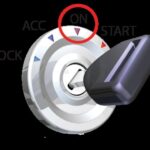Navigating the complexities of your Dodge’s Antilock Braking System (ABS) can be daunting, especially when you’re faced with diagnostic trouble codes (DTCs). Among these, OBD2 code 51 can be particularly concerning. This article, as part of carparteu.com’s automotive expertise, will delve into the specifics of Dodge OBD2 ABS code 51, focusing on its meaning, potential causes, and what you need to know to address it effectively.
Before we dive into code 51, it’s crucial to understand the basics of your Dodge’s ABS and how the OBD2 system comes into play. The ABS is a critical safety system designed to prevent wheel lock-up during hard braking, allowing you to maintain steering control. When the ABS detects a problem, it triggers a DTC, which can be read using an OBD2 scanner. Code 51 specifically points to an issue within the Kelsey-Hayes ABS system, commonly found in many Dodge models.
Dodge vehicles, particularly those from the late 20th and early 21st centuries, often utilize Kelsey-Hayes Electronic Brake Controller (EBC) systems. There are primarily two types you might encounter: the EBC 325 and the EBC 2. Identifying which system your Dodge has is the first step in accurate diagnosis.
The EBC 325 system is characterized by having the Controller Antilock Brake (CAB) unit directly mounted on the Hydraulic Control Unit (HCU). This integrated design is a key visual identifier.
.JPG.e21511dc35dee9e5cc85a2b84e589322.JPG)
On the other hand, the EBC 2 system is identifiable by a separate rear hydraulic control unit (HCU), distinct from the main ABS components. This split system is a hallmark of the EBC 2 setup.
.JPG.09747c6e5c867035417284cd87239cc2.JPG)
Now, let’s focus on the core issue: Dodge OBD2 ABS Code 51 – Rear Isolation Valve Solenoid Open. This code, in both EBC 325 and EBC 2 systems, indicates a problem with the rear isolation valve solenoid circuit. Specifically, “Solenoid Open” means that the electrical circuit to the rear isolation valve solenoid is broken or incomplete.
What does the Rear Isolation Valve Solenoid do? In the ABS hydraulic control unit, solenoid valves play a crucial role in controlling brake fluid pressure to individual wheels during ABS activation. The rear isolation valve solenoid is responsible for isolating or releasing brake pressure to the rear wheels as needed to prevent wheel lock-up.
Potential Causes of Code 51:
- Faulty Rear Isolation Valve Solenoid: The solenoid itself might be defective, with an internal open circuit in its coil.
- Wiring Issues: Damage to the wiring harness leading to the rear isolation valve solenoid. This could include broken wires, corrosion in connectors, or loose connections.
- Connector Problems: The electrical connector at the solenoid or within the ABS module wiring could be damaged, corroded, or not properly seated, leading to an open circuit.
- ABS Module Malfunction: In rare cases, a fault within the ABS module (CAB) itself could incorrectly trigger code 51, although this is less common than solenoid or wiring issues.
Troubleshooting and Diagnostic Steps:
When faced with Dodge ABS code 51, a systematic approach to diagnosis is essential:
- OBD2 Scan and Verification: First, confirm the code 51 is active using an OBD2 scanner. Clear the code and see if it returns. Intermittent faults can sometimes trigger codes, and clearing them can help determine if the problem is persistent.
- Visual Inspection: Carefully inspect the wiring and connectors leading to the rear isolation valve solenoid. Look for any signs of damage, corrosion, or loose connections.
- Solenoid Resistance Test: Use a multimeter to check the resistance of the rear isolation valve solenoid. Compare the reading to the manufacturer’s specifications. An open circuit (infinite resistance) would confirm a faulty solenoid.
- Wiring Continuity Test: Test the continuity of the wiring between the ABS module connector and the solenoid connector to rule out any breaks or shorts in the wiring.
- Connector Inspection and Cleaning: Clean and reseat all relevant connectors, ensuring good electrical contact. Use dielectric grease to prevent future corrosion.
Important Note: Working with automotive braking systems requires caution and expertise. If you are not comfortable with electrical testing or brake system components, it is highly recommended to seek assistance from a qualified automotive technician.
Beyond Code 51: Other Related ABS Codes
While addressing code 51, it’s helpful to be aware of other related ABS codes within the Kelsey-Hayes systems. Codes in the 40s and 50s often relate to valve solenoid issues. For example, codes 52, 53, and 54 relate to the rear dump valve solenoid, and codes 41-48 cover front isolation and dump valve solenoids. Understanding the broader context of these codes can be beneficial in diagnosing complex ABS problems.
Using an OBD2 Scanner for Dodge ABS Diagnostics
An OBD2 scanner is your primary tool for interacting with your Dodge’s ABS system. A basic scanner can read and clear codes. More advanced scanners can provide live data, allowing you to monitor sensor readings and potentially activate solenoids for testing purposes. Always follow the scanner manufacturer’s instructions and safety precautions when using diagnostic tools.
Conclusion:
Dodge OBD2 ABS code 51 indicates an “open circuit” in the rear isolation valve solenoid, pointing to potential issues with the solenoid itself, wiring, or connections. While this article provides a starting point for understanding and diagnosing this code, accurate diagnosis and repair often require professional expertise. Prioritizing safety and seeking qualified help when needed ensures your Dodge’s ABS system functions correctly, maintaining crucial safety on the road. Remember to always consult your vehicle’s service manual for specific diagnostic procedures and specifications.
